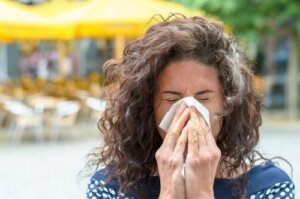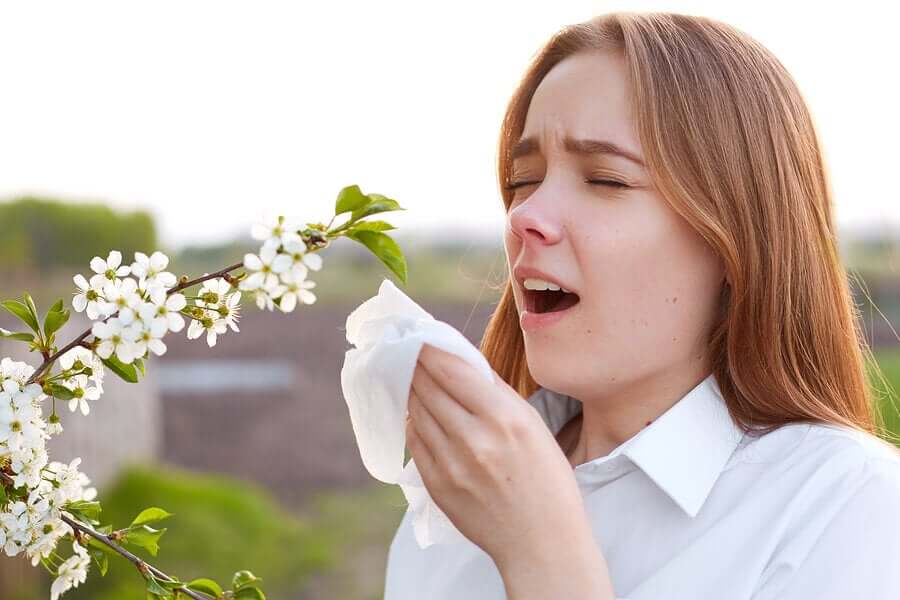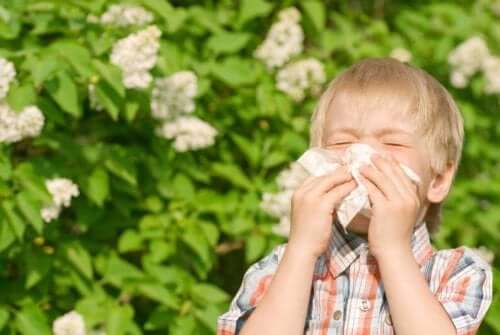8 Tips for Surviving Pollen Allergies


Reviewed and approved by the nurse Leidy Mora Molina
Each spring, pollen allergies get dramatically worse. After a cold winter, plants and flowers come alive again and release pollen. This powdery substance is full of microspores, which fertilizes plants of the same species. Just one plant is capable of releasing thousands of spores into the air.
Pollen is invisible when it’s in the air. On days where pollen count is especially high, you might be able to see a yellow haze.
When we breathe it in and it makes contact with our respiratory system, we might have an allergic reaction. And, if you suffer from pollen allergies, pollen touching your skin, or getting in your eyes or nose can cause intense reactions.
Symptoms of seasonal allergies
Some of the most common symptoms are sneezing, itchy or runny nose, and watery eyes. Sometimes more serious illnesses can develop, such as allergic asthma.
With the arrival of spring, annoying symptoms can get worse due to high levels of pollen in the air. If your symptoms become severe or unbearable, talk to your doctor about a prescription antihistamine or topical hydrocortisone.

8 tips for coping with allergies
There are simple things you can do to survive the worst of seasonal allergies. It’s a good idea to wear sunglasses when you go outside, avoid hanging your clothes out to dry, and keeping your windows closed during peak pollen hours.
Below we’ve shared 8 tips to help you beat pollen allergies and its symptoms.
1. Stay inside
On days with high pollen levels and lots of wind, we recommend you opt for indoor activities if at all possible. If you have to go out, always wear a mask. Wetting the mask first will further prevent pollen from entering your airway.
You might like: The 5 Best Natural Remedies for Pollen Allergies
2. Wash your fruits and vegetables
Fresh vegetables and fruits are full of vitamins and nutrients that can help you quickly conquer your allergy symptoms. Wash your produce well before you eat them to make sure you get all of the pollen that might be stuck to the outside.

3. Check the time
Throughout the day, the periods with the highest rates of pollen are between 5:00 and 10:00 in the morning and 7:00 and 10:00 at night. That’s why it’s best to limit your outdoor activities and keep your windows closed during these peak hours.
4. Use air filters to alleviate symptoms
Anti-pollen filters can help reduce your risk of coming in contact with pollen. It’s a good idea to put them in the air conditioners in your car and at home. While your car is moving, keep the windows closed so pollen doesn’t get into the car.
To best avoid contact with the microspores, you should change the filters regularly.
Read more: The 9 Most Common Allergies in Kids
5. Wear sunglasses and learn about the pollen levels in your area
If you have to go out, sunglasses are a convenient way to prevent pollen from getting into your eyes. It’s also helpful to know how high pollen levels are by looking into your local weather services.
6. Change your clothes
Pollen spores can stick to your clothes, which is why you should try to shower and change your clothes as soon as you get home. If you can’t change your clothes, washing your hands and face might help. Similarly, avoid hanging your clothes outside to dry, especially during spring.
7. Garden smart

If you have a garden, avoid planting plants that pollinate through the air. For example, Arizona Cypress hedges aren’t recommended if you suffer from seasonal allergies.
Moreover, try to steer clear of any activities that could release pollen, like mowing your lawn or sweeping your terrace. If you’re allergic to grass pollen, don’t lay down on the grass. If you’re planning on spending the night outside, try not to sleep close to trees or plants.
8. Pharmaceutical treatment
If you’re taking antihistamines to treat a severe pollen allergy, you should always do so under your doctor’s supervision. Some people with lighter symptoms might get relief from natural remedies. Regardless, a vaccine against seasonal allergies could be helpful for varying degrees of symptoms.
If you suffer from uncomfortable pollen allergies, be sure to follow these tips. However, if your symptoms worsen or don’t go away, seek medical attention.
All cited sources were thoroughly reviewed by our team to ensure their quality, reliability, currency, and validity. The bibliography of this article was considered reliable and of academic or scientific accuracy.
- Gastaminza, G., Bartolomé, B., Bernedo, N., Uriel, O., Audícana, M. T., Echenagusia, M. a, … Muñoz, D. (2005). Alergia al polen de las oleáceas en un lugar donde no hay olivos. Alergologia e Inmunologia Clínica.
- González, L. (2014). Alergias y el sistema inmune: una revisión desde el aula. Revista Facultad de Ciencias de La Salud UDES.
- F, G. A. G., & A, V. M. A. (2005). Polinosis y aeroalergenos. Alergia, Asma e Inmunología Pediátricas.
- Grewling Ł, Bogawski P, Smith M. Pollen nightmare: elevated airborne pollen levels at night. Aerobiologia (Bologna). 2016;32(4):725–728. doi:10.1007/s10453-016-9441-7
- Sánchez-Lafuente AM, Guitián J, Medrano M, Herrera CM, Rey PJ, Cerdá X. Plant traits, environmental factors, and pollinator visitation in winter-flowering Helleborus foetidus (Ranunculaceae). Ann Bot. 2005;96(5):845–852. doi:10.1093/aob/mci236
This text is provided for informational purposes only and does not replace consultation with a professional. If in doubt, consult your specialist.








